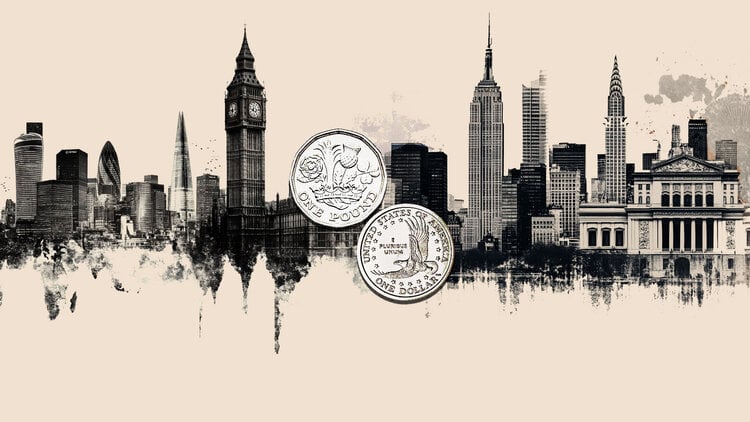Here’s what you need to know on Monday, October 7:
He US Dollar Index (USD) rose more than 2% in the previous week and recorded its largest weekly gain of 2024. The index remains in a consolidation phase around 102.50 in the European morning on Monday. Later in the session, Eurostat will release retail sales data for August. In the second half of the day, the change in consumer credit for August will be the only notable data on the US economic agenda. During trading hours in the United States, several officials from the Federal Reserve (Fed), including Governor Michelle Bowman, will deliver speeches.
US Dollar PRICE Last 7 days
The table below shows the percentage change of the United States Dollar (USD) against the main currencies in the last 7 days. US dollar was the strongest currency against the Japanese yen.
| USD | EUR | GBP | JPY | CAD | AUD | NZD | CHF | |
|---|---|---|---|---|---|---|---|---|
| USD | 1.87% | 2.09% | 4.27% | 0.58% | 1.63% | 3.08% | 2.03% | |
| EUR | -1.87% | 0.23% | 2.36% | -1.24% | -0.18% | 1.20% | 0.27% | |
| GBP | -2.09% | -0.23% | 2.25% | -1.47% | -0.42% | 0.97% | 0.00% | |
| JPY | -4.27% | -2.36% | -2.25% | -3.49% | -2.60% | -1.13% | -2.10% | |
| CAD | -0.58% | 1.24% | 1.47% | 3.49% | 1.09% | 2.47% | 1.50% | |
| AUD | -1.63% | 0.18% | 0.42% | 2.60% | -1.09% | 1.39% | 0.42% | |
| NZD | -3.08% | -1.20% | -0.97% | 1.13% | -2.47% | -1.39% | -0.98% | |
| CHF | -2.03% | -0.27% | -0.01% | 2.10% | -1.50% | -0.42% | 0.98% |
The heat map shows percentage changes for major currencies. The base currency is selected from the left column, while the quote currency is selected from the top row. For example, if you choose the US Dollar from the left column and move along the horizontal line to the Japanese Yen, the percentage change shown in the box will represent USD (base)/JPY (quote).
The USD benefited from upbeat September jobs data on Friday and continued to outperform its main rivals heading into the weekend. The US Bureau of Labor Statistics reported that nonfarm payrolls (NFP) increased by 254,000 in September, far exceeding the market expectation of 140,000. Additionally, the unemployment rate fell to 4.1% from 4.2% in the same period.
EUR/USD extended its weekly downtrend on Friday and touched its lowest level since mid-August near 1.0950. The pair struggles to stage a rebound in the early European session on Monday and is trading below 1.1000.
GBP/USD fell below 1.3100 with the immediate reaction to the US labor market data on Friday, but managed to erase its losses to end the day flat. The pair remains stable and moves in a narrow band slightly above 1.3100 in the European morning.
In its quarterly report released on Monday, the Bank of Japan (BoJ) raised the valuation of two of Japan’s nine regions. “All regions in Japan saw a moderate recovery of the economy, improving or moderately improving,” the BoJ further noted. After rising more than 1% on Friday, the USD/JPY drops early on Monday and trades below 148.50.
The gold posted small losses the previous week despite broad-based USD strength, as the precious metal capitalized on safe-haven demand. XAU/USD remains on the defensive to start the week and is trading in negative territory below $2,650.
The US Dollar FAQs
The United States Dollar (USD) is the official currency of the United States of America, and the “de facto” currency of a significant number of other countries where it is in circulation alongside local banknotes. According to 2022 data, it is the most traded currency in the world, with more than 88% of all global currency exchange operations, equivalent to an average of $6.6 trillion in daily transactions. After World War II, the USD took over from the pound sterling as the world’s reserve currency.
The single most important factor influencing the value of the US Dollar is monetary policy, which is determined by the Federal Reserve (Fed). The Fed has two mandates: achieve price stability (control inflation) and promote full employment. Your main tool to achieve these two objectives is to adjust interest rates. When prices rise too quickly and inflation exceeds the 2% target set by the Fed, the Fed raises rates, which favors the price of the dollar. When Inflation falls below 2% or the unemployment rate is too high, the Fed can lower interest rates, which weighs on the Dollar.
In extreme situations, the Federal Reserve can also print more dollars and enact quantitative easing (QE). QE is the process by which the Fed substantially increases the flow of credit into a clogged financial system. This is an unconventional policy measure used when credit has dried up because banks do not lend to each other (for fear of counterparty default). It is a last resort when a simple lowering of interest rates is unlikely to achieve the necessary result. It was the Fed’s weapon of choice to combat the credit crunch that occurred during the Great Financial Crisis of 2008. It involves the Fed printing more dollars and using them to buy US government bonds, primarily from financial institutions. QE usually leads to a weakening of the US Dollar.
Quantitative tightening (QT) is the reverse process by which the Federal Reserve stops purchasing bonds from financial institutions and does not reinvest the principal of maturing portfolio securities in new purchases. It is usually positive for the US dollar.
Source: Fx Street
I am Joshua Winder, a senior-level journalist and editor at World Stock Market. I specialize in covering news related to the stock market and economic trends. With more than 8 years of experience in this field, I have become an expert in financial reporting.







